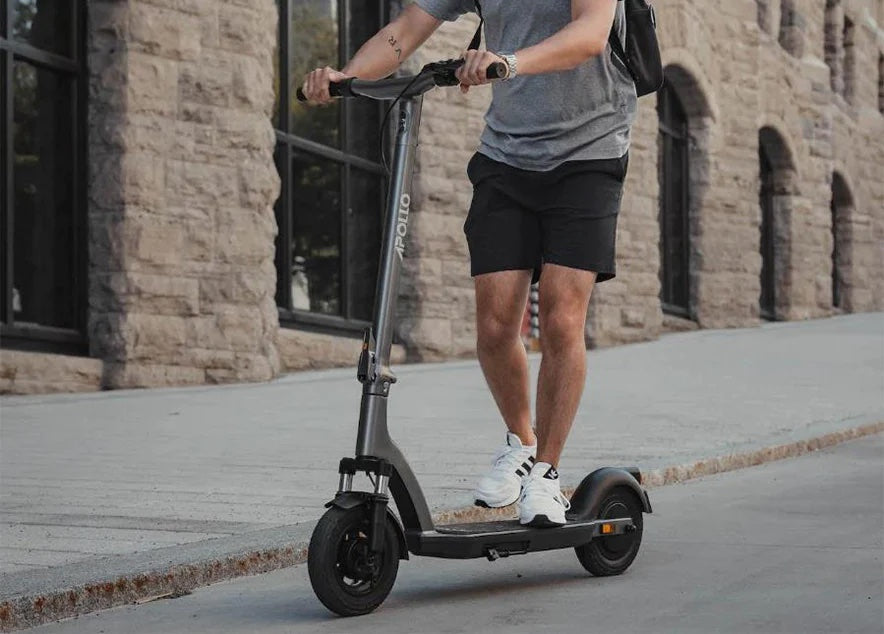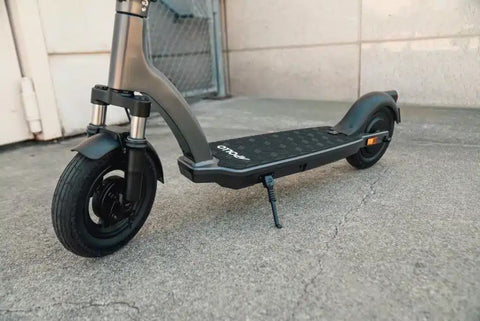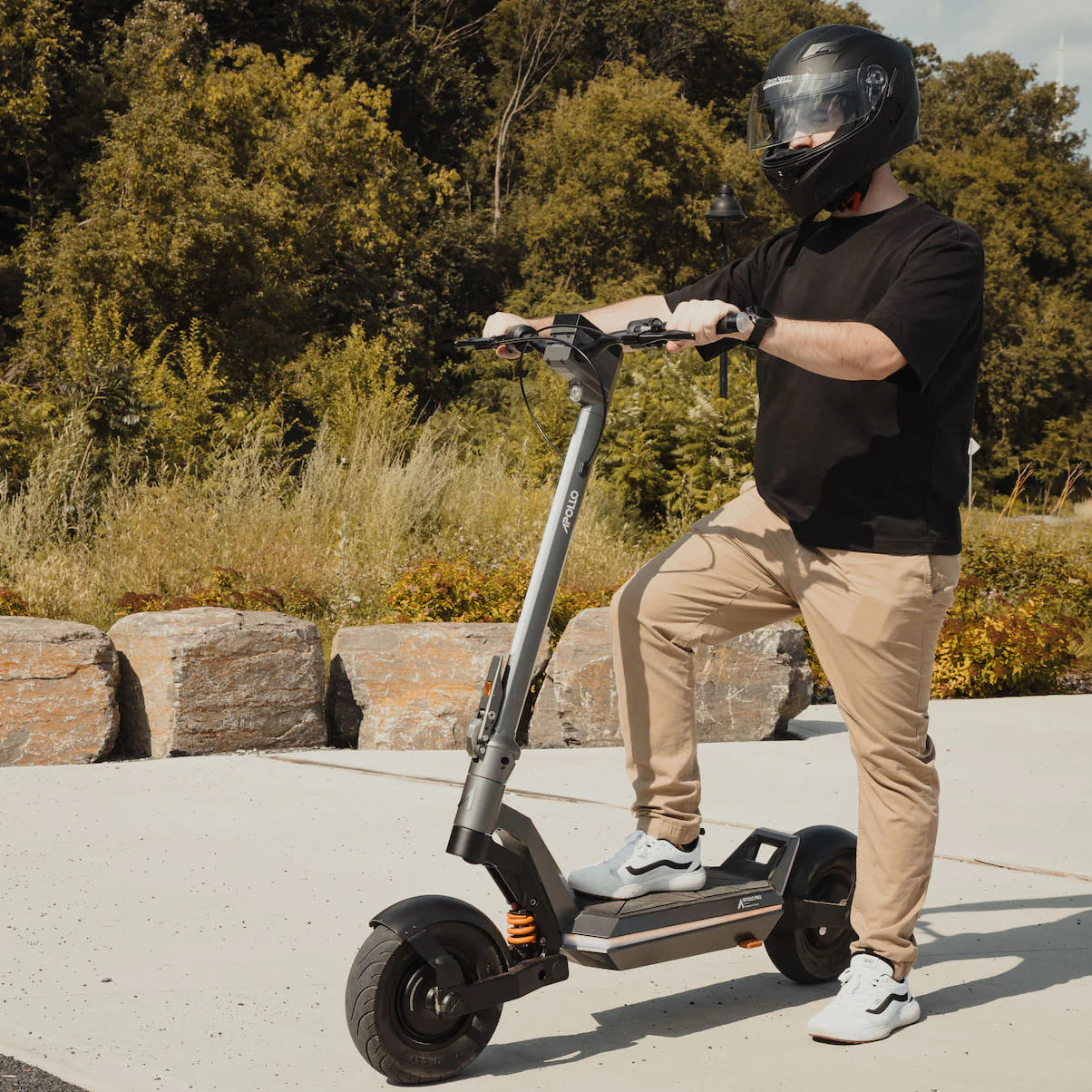When you first start shopping for an electric scooter, it seems like you run into a bewildering number of options. Do you need to spend a couple thousand dollars, or can you find a safe, reliable, and fast scooter for a few hundred bucks? How do you even know what to look for in an entry-level electric scooter? Lots of manufacturers make large claims about their scooters’ range and speed numbers. Is there some way you can verify those claims?
Entry-level scooters come in all shapes, flavors, and price ranges, from the most basic models starting at $300 USD to premium entry-level scooters that cost somewhere between $1000 and $1200 USD and come with high-tech features, dual suspension, and high speeds. Below, we’ll take a look at a few examples of different categories of entry-level scooters: basic models, intermediate models, and premium models with the above features, and we’ll explain what you need to know in order to buy a quality scooter and get your money’s worth.
Portable electric scooters for beginners
Key Features to Consider When Choosing an Entry-Level Electric Scooter
When selecting an entry-level electric scooter, there are several key features to consider. The first aspect to evaluate is the scooter's weight capacity, as this determines the maximum weight it can carry. This is particularly important for heavier riders or those who need to carry heavy backpacks, groceries, or other items while using their scooter.
Once you’ve made sure that a particular model will accommodate your weight and anything you might carry with you, you’ll want to evaluate factors like battery life and range, motor power and speed, design and portability, and safety features such as braking and lighting.
Comparing Battery Life and Range of Different Electric Scooter Models
Battery life and range are major considerations, as they determine the distance you can travel before needing to recharge. When comparing different models, it's important to evaluate both the battery capacity and the estimated range provided by the manufacturer. Keep in mind that manufacturer range estimates are just that, and they are usually made with ideal conditions in mind.
When evaluating a scooter’s range, think about the terrain on which you plan to ride your scooter. Hilly places and rough, cracked pavement can drain the battery more quickly, reducing the overall range of the scooter. Understanding how different terrain impacts battery life can help you select an electric scooter model that best suits your intended riding environment.
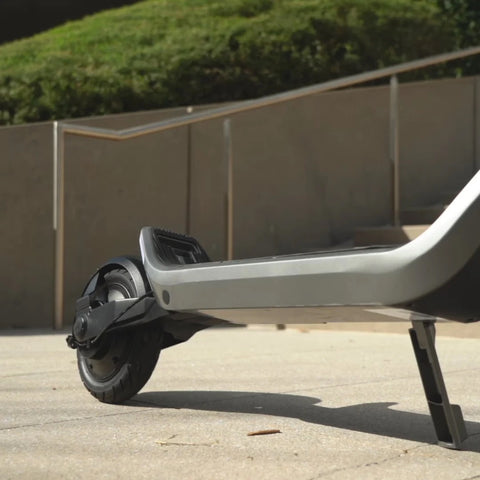
Understanding the Motor Power and Speed Capabilities of Entry-Level Scooters
The motor power and speed capabilities of entry-level electric scooters are crucial factors that directly impact the scooter's performance. Most entry-level scooters have motors rated at 350W-500W, although more expensive entry-level models will often have higher wattage motors or even two motors.
Electric scooters are designed with hub-mounted motors in either one or both wheels. Entry-level scooters typically have one motor, mounted in the front or rear wheel, but dual motor electric scooters are becoming more common at the premium end of the entry-level category. These tend to be much more powerful and efficient, with faster acceleration times and more torque for hills.
Entry-level electric scooters typically have lower top speeds compared to their more expensive counterparts. However, it's important to choose a scooter that can reach a speed suitable for your needs. If you need to pass cyclists in the bike lane and occasionally merge with car traffic for turns, you’ll want an electric scooter that can hit speeds of over 20 mph. If you plan to keep it on the bike path and campus walkways, lower speed entry-level scooters might be just fine.
Why does designed in Canada matter?
Evaluating the Design and Portability of Electric Scooters for Beginners
An electric scooter's design should not only be visually appealing but also functional and ergonomic, ensuring maximum comfort and safety during rides. Pay attention to features such as adjustable handlebars that work for your height and a deck that’s long enough and wide enough for your riding position. Also look at the scooter’s folding mechanism to ensure it’s secure and easy to operate.
Portability is particularly important if you combine your scooter with other modes of travel or carry it up frequent flights of stairs. Factors such as weight and the overall dimensions of the scooter are crucial for ease of carrying and storage.
Additionally, a quality suspension system can absorb shocks and vibrations, offering a smoother and more comfortable ride, but suspension is rare on basic and intermediate entry-level electric scooters under $1,000 USD. And suspension systems can make a scooter heavier and less portable.
Safety Features to Look for in Entry-Level Electric Scooters
One non-negotiable safety feature is a reliable and responsive braking system, which can greatly enhance control confidence and reduce the risk of accidents. The most safe entry-level scooters have dual braking systems that combine regenerative braking, which sends power back to the battery, with mechanical or hydraulic disc or drum brakes.
Lighting is also key to staying safe on the road. Integrated lights, such as front and rear LED lights, brake lights, and turn signals, contribute to increased visibility and safety, especially when riding during low-light conditions or at night. The brighter the lighting on an entry-level scooter, the less you’ll have to spend on accessory lights to make your scooter safe enough to ride when it gets dark.
2024 Entry Level Scooter Comparison
Segway Ninebot E2/E2 Plus – $299/$349 USD

Segway is a big name in electric scooters for their many quality rides. Their E2 and E2 Plus electric scooters are on the most affordable end of the entry-level scale. These are quality, well made scooters for beginners with low speeds and low power.
Don’t expect much in the way of ride quality since these scooters use solid tires for low/no-maintenance, but there’s a little give in their foam design. The difference between the two is a slightly larger battery for the E2 Plus for a top speed of 15 mph and an extra mile or two of range.
These scooters are great choices for teens and young college students, or adult commuters who don’t need to go far and want a no-hassle, easy-to-carry option.
NIU KQi2 Pro — $599 USD
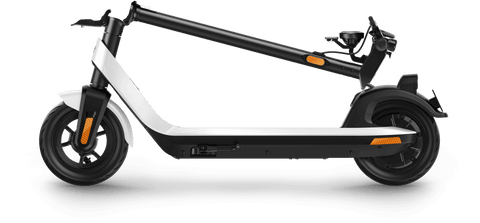
NIU’s KQi series of electric scooters are excellent examples of intermediate entry-level vehicles that are both practical for commuting and very fun to ride.
The KQi2 Pro is exceptionally well designed, comes with a 2-year warranty, and has an innovative lighting feature and dual mechanical disc brakes on top of its rear regenerative braking.
At it's price point, it’s almost impossible to do better than the KQi2 Pro. The scooter lacks suspension and is not suitable for rough terrain, but its 10” pneumatic tires offer good cushioning on the road.
EMOVE Touring – $899 USD
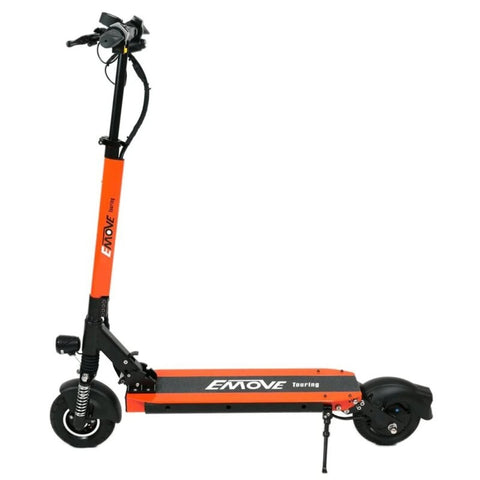
The EMOVE Touring uses a time-tested design that folds easily and compactly, with collapsible handlebars that adjust to the height of most adult riders.
A solid tire in the rear and tubeless pneumatic tire in the front offers a pragmatic combination of enhanced ride quality, traction, and corning and a decreased risk of flats, which tend to happen most in the rear wheel.
This is also an entry level with dual suspension – three springs in the front and two in the rear. And fast acceleration and a top speed of 25 mph ensures you can keep up in low speed city car traffic when you need to.
Apollo Air — $999 USD

At the premium end of the entry-level electric scooter category, the Apollo Air offers so much more:
In addition to its sleek, ergonomic design, wide handlebars, front motorcycle-style suspension, and tubeless 10” pneumatic tires, the Air offers dual drum brakes – which rarely need adjustment or maintenance – and variable regenerative braking.
The Air has a bright lighting package with turn signals integrated into the handlebar ends, and the scooter is compatible with Apollo’s award-winning app for GPS tracking, ride analytics, and much more.
Apollo Go — $1,299 / $1,199 USD
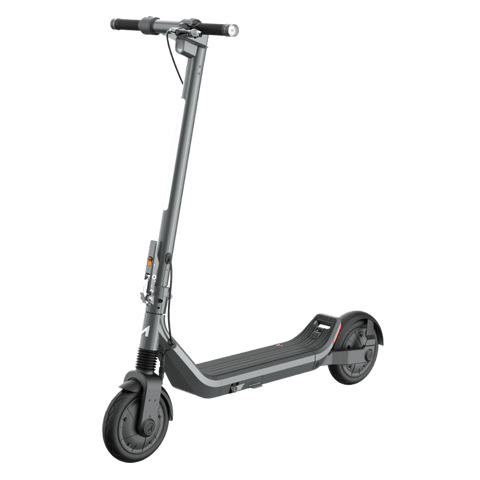
The new Apollo Go is the most premium entry-level electric scooter you can purchase, with dual 350W motors that spin up to a peak output of 1500W for extra speed and power when you need it.
The Go is fitted with sealed drum brakes and dual regenerative braking and many of the features of the larger, much more expensive Apollo Pro, such as the ability to use your phone as your primary display, using the built-in Quad Lock mount, or to use a super-bright, large dot matrix display instead.
The Go has a dual suspension especially designed for this electric scooter, consisting of a single spring in the front and a spring and rubber suspension in the in the back, an ingenious design that keeps the scooter’s weight to a manageable 46 pounds while also offering some of the smoothest ride quality you’ll find on any electric scooter.

















